|
In 1997, sailor and oceanographer, Charles Moore, was on the return voyage to Long Beach, California after having competed in the Transpac sailing race which begins in Los Angeles and ends in Hawaii, when he and his crew aboard the Alguita encountered an endless sea of plastic in the North Pacific subtropical gyre. In an article Moore wrote for Natural History, he writes, "I often struggle to find words that will communicate the vastness of the Pacific Ocean to people who have never been to sea. Day after day, Alguita was the only vehicle on a highway without landmarks, stretching from horizon to horizon. Yet as I gazed from the deck at the surface of what ought to have been a pristine ocean, I was confronted, as far as the eye could see, with the sight of plastic. It seemed unbelievable, but I never found a clear spot. In the week it took to cross the subtropical high, no matter what time of day I looked, plastic debris was floating everywhere: bottles, bottle caps, wrappers, fragments. " Moore encountered this sea of trash - now known as the 'Eastern Garbage Patch (EGP)' which makes up one half of the 'Great Pacific Garbage Patch (GGP)' - while unhurriedly returning to Long Beach after the race in what is often referred to as the Horse Latitudes. This area lies between 30 and 38 degrees north and is characterized as as an area of high pressures with light winds. There in the convergence zone of the North Pacific Gyre lies an area estimated to be roughly the size of Texas containing 4 particles per cubic meter totaling an estimated 100M tons of plastic and other debris. Plastics do not biodegrade, but instead slowly photodegrade, which is a process whereby larger plastic debris fractures due to lengthy sun exposure into smaller and smaller pieces. These pieces remain in the ocean for an incredibly long time and greatly damage the ecosystem, killing marine life by both suffocation and also by blocking digestive systems causing starvation, as well as leaching dangerous chemical pollutants including BPA (Bisphenol A), PCBs, and derivatives of polystyrene. As the pieces become smaller and smaller, the plastics enter the food chain as fish mistake these micro plastics for plankton and other small nutrients. In a 2001 study, researches determined that the overall concentration of plastics in the area of the EGP was seven times greater than the concentration of plankton. Naturally, fish eating this plankton are later eaten by larger fish and these plastics and the associated chemicals make it back to our tables.  On nearby Midway Atoll, nearly all of the 1.5M Laysan albatrosses are found to have plastic in their digestive system, where approximately one third of all chicks die due to being fed plastic from their parents. Unlike adult albatrosses, the babies cannot regurgitate accidentally ingested plastics and so either choke or die from blocked digestive tracks. Sea turtles commonly mistake plastic bags for jelly fish causing choking and death. Whales are washing up dead on beaches around the world with large quantities of plastic found in their stomachs. Plastic refuse and nets get dragged along reefs, breaking off chunks and permanently damaging the coral. What then can we do to reverse course, change our behaviors, and reduce this catastrophie? In a NOAA podcast interview, NOAA's Marine Debris Program communications specialist Dianna Parker notes the need to address not just the current plastic waste floating in the ocean, but also the sources, "We did some quick calculations that if you tried to clean up less than one percent of the North Pacific Ocean it would take 67 ships one year to clean up that portion. And the bottom line is that until we prevent debris from entering the ocean at the source, it's just going to keep congregating in these areas. We could go out and clean it all up and then still have the same problem on our hands as long as there's debris entering the ocean." "There's so much that we can do to keep debris from entering the ocean. It's as simple as changing your individual behavior every day, creating less waste, reusing what you can, remembering to recycle ... littering is obviously a no-no. And then going out and joining a beach clean up. It's difficult to really understand the problem until you get out there and see it first-hand, how bad the problem is." So, is the situation hopeless? Dianna Parker continues: "It's not a hopeless situation. Marine debris is absolutely a solvable problem because it comes from us humans and our everyday practices. We can take any number of steps to keep it from entering the ocean and that can happen at the highest level with governments and it can happen at the lowest level individuals and everyday choices." 10 Things You Can Do To Help Reduce Ocean Plastic Waste 1. Support plastic trash bag bans in your local communities, municipality, state, or federal government. 2. Stop buying plastic water bottles and carry a reusable canteen instead. It takes a single plastic bottle over 400 years to disintigrate! That bottle you just drank this morning will still be around in 2,416!!! 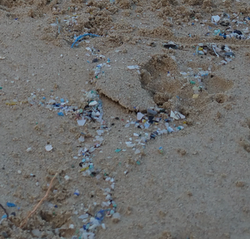 3. Attend a beach clean up and pay attention not just to the large pieces, but also the micro plastics! Use a mesh sand sifter or other device (see: sand sifters) to assist you in collecting these insidious, small pieces that work their way into the food chain. 4. Cook food at home using as little plastic packaging as possible by focusing on raw ingredients (...and just think of the personal health benefits!) 5. Take your own resuable mug to the coffee shop. Forgot it this time? Then skip the lid or the stir straw! Be conscious of only using disposable plastics when absolutely unavoidable. 6. Recycle! Recycle! Recycle! 7. Shop at farmer's markets or waste conscious stores that intentionally limit packaging. 8. Participate in an underwater reef clean-up. Its both super fun and removes fishing line and netting that can damage coral reefs and strangle, choke, and kill marine life. 9. Switch from disposable diapers to cloth. 10. Skip plastic bottled cleaning agents and use natural alternatives instead such as baking soda and vinegar, which also cuts down on downstream chemical runoff. Mahalo Nui Loa and Aloha! Al Smith
3 Comments
 Yesterday, several HOA Ambassadors traveled up to the North Shore to visit Three Tables, Shark's Cove, and Kuilima Cove to compare signage regarding not stepping on, touching, or otherwise damaging the coral reefs; to take note of the agencies and civics groups responsible for placing and preserving each sign; to investigate signage at Laniakea regarding not touching sea turtles; and finally, to visit a nearby area where there are often Hawaiian monk seals to document any efforts at protection and education being made by volunteers or government on behalf of these highly endangered mammals. We began our day with a quick stop at Laniakea which is a perhaps the best beach in the world to see the 'threatened' green sea turtle, which frequently come ashore here at the south western end of the '7 Mile Miracle.' It is illegal to touch or otherwise disturb green sea turtles, and we were curious to see what kind of signage was in place to educate the throngs of visitors who stop here each day. We were impressed with the signage as it was centrally located and included not only words, but images to help instruct both English speaking and non-English speaking visitors as to the proper way to view these incredible animals. From there, the next stop was Three Tables which is located in Pupukea less than a mile north of world famous big wave surfing spot - Waimea Bay. Three Tables is part of the Pupukea Marine Life Conservation District which was established in 1983 and stretches from the Wananapaoa Islets at the southwestern end of Waimea Bay to Kulalua Point at the northern end of Shark's Cove. As a result of its official designation, this ocean area enjoys special protections against the removal of sand, rocks, corals, certain types of fishing, and limits on seaweed harvesting. Also, due to the efforts of the DLNR's Division of Aquatic Resources and Mālama Pūpūkea-Waimea - a volunteer-based NS nonprofit that was formed in 2005 as part of the State's Makai Watch program - this area has excellent signage regarding not damaging or disturbing the fragile coral reefs and marine ecosystem found in this jewel of a location. We went out for a brief swim and encountered beautiful corals, schools of Convict Tangs (Acanthurus tristegus), Parrotfish, Picasso Triggerfish, and even a honu ('honu' means green sea turtle in Hawaiian)! When encountering the honu on the Makai (or 'Ocean' side) of the blocks of coral (the 'tables' in 'Three Tables') we - like all who encounter these beautiful creatures - felt the pull to swim up to get a closer look, but fought back the urge, did the right thing, and kept our distance. We joyfully observed the turtle for several moments, snapped a photo, and swam off leaving her undisturbed. From there we headed several hundred yards up the coast to popular snorkel and dive site, Shark's Cove. We noted similar signs to the one pictured above along the entire stretch of coastline in this area and were thrilled to see no instances of visitors standing on or otherwise disturbing the reef environment (with the exception perhaps of the ocean's edge where those entering and exiting the water have to navigate a rocky and shallow shoreline.) We did some nice deep dives, holding our breaths as long as we could and marveling at this underwater paradise, before moving along to Kuilima Cove which is situated just to the east of the famed and only North Shore resort, Turtle Bay. We arrived at Turtle Bay and took some photos of the current signage at the beach. We knew from staying at the hotel recently that the signage is not up to par with the signage at the Marine Life Conservation area in Pupukea, as Kuilima Cove does not hold the same officially recognized status, government support, or special protections. That said, we'd love to see the hotel place signs regarding not touching or disturbing turtles, coral, or other marine life. All too often at this magical place do we see guests of the hotel and visitors to the beach resting their feet on the shallow coral bottom, standing up on the exposed coral blocks, and scrambling to take selfies up-close-and-personal with sea turtles. A little education goes a long way, and in this case, Turtle Bay Resort - which has a tremendous record of sustainable practices - ought to consider placing better signage to protect the reef that is such a valuable asset and resource to their guests, the environment, and the community at large. We've written two separate letters in the past week as a follow-up to our recent stay requesting a dialogue regarding updating the signage at Kuilima Cove, but as yet have not heard back. We are hopeful that we will hear something soon. We'd encourage others to reach out to TB as well regarding this issue as such an inexpensive update to the signs could go a long way towards protecting what was once one of Queen Liliuokalani's favorite swimming locales in the 1800s. You can contact the Turtle Bay Foundation at [email protected] to do your part to request new signage be erected to protect Kuilima Cove from reef damage caused by under-informed visitors. Pictures of the current signage are below. They are fairly standard for the signage you'd see elsewhere on the island, but they could be so much better! Compare these two signs to the ones pictured above from Lanikea, Three Tables, and Shark's Cove. In the ones currently at Kuilima Cove it is noted that there is a 'sharp coral bottom' which seems to warn swimmers of the dangers to the swimmers themselves of touching down, but not of the dangers to the coral reef. Given the medium-to-high number of turtle sightings in the cove, it would also be nice to see some additional signage regarding not touching the turtles as well. Well a guy can dream anyway, can't he...? Continuing down the beach we encountered a Hawaiian Monk Seal. These creatures are an extremely endangered species and must be given a very wide berth. Disturbing a monk seal through loud noises, coming too close for pictures, or any other form of harassment is not only illegal, it can also cause the monk seal to dangerously alter their feeding, mating, and resting cycles. There are only an estimated 1,100 Hawaiian monk seals left in existence, so please do all you can to avoid disturbing these amazing animals. You'll note in the pictures below that some conscientious volunteers erected a crude ring of vertical sticks to create a ring of protection against this resting monk seal, as well as some nearby signage aimed at educating passersby about the need to respect these ocean mammals. And finally, on the way back to the car we did our part to express our gratitude for this amazing day and this beautiful place by doing a mini beach clean-up, making sure to get AT LEAST THREE PIECES of trash before leaving for the day. Did you get your 3 pieces today??? Mahalo nui loa and much aloha! In this great 17 minute talk, famous free diver and Marine Biologist - Ocean Ramsey - who frequently swims sans cage with Great White Sharks discusses the importance of protecting and respecting sharks. Enjoy the video! 
In 2010, the National Oceanic and Atmospheric Administration (NOAA) published a report entitled, 'Hawaiian Archipelago's Coral Reef Management Priorities' detailing the government agency's 10 year strategic coral reef management priorities. The report's purpose was to determine how to best direct its investment in activities in each jurisdiction through grants, cooperative agreements, and internal funding. It is a fascinating report and worth a read. For those with limited time however, a few key facts are provided below: - According to NOAA, greater than 60% of coral reefs in U.S. waters are found in the Hawaiian Archipelago. - The eight main Hawaiian Islands support over 140,000 acres of coral reef habitat. - Hawai'i has estimated rates of endemism of 25% or greater for most coral, fish, and invertebrate species. This unique marine life is found nowhere else in the world - It is estimated that the state's coral reefs generate approximately $800M annually to the state's economy from marine tourism -'While Hawaii’s reefs are still in fair to good condition, many urban areas and popular destinations have suffered from landbased sources of pollution, fishing pressure, recreational overuse and invasive species'... Let's take a look at a few of these causes of damage as paraphrased from the report: Pollution Problem: Land-based sources of pollutants, such as sediment, nutrients and other pollutants, represent one of several factors threatening the quality of coral reef ecosystems. Sources include: sediment washed away by mono-crop farms, pesticides, petroleum hydrocarbons, pharmaceuticals, heavy metals, pathogens, and excess nutrients. These pollutants are washed into the ocean during heavy rains and damage the reef in a number of ways including promoting algae growth that competes with corals for space on benthic reef surfaces and can affect the success of coral settlement. What you can do: 1. Drive less and as a result use less petroleum and reduce the level of hydrocarbons you are responsible for emitting into the atmosphere. Bike, walk, run, or even swim wherever you need to go, whenever possible! Also, worth considering is purchasing a more gas efficient vehicle, hyrbrid, or electric; or switch over to a moped, scooter, or motorcycle for when you must drive. Its Hawaii after all, take it slow and cruise a bike! 2. NEVER USE PESTICIDES - especially in residential or home use. No need whatsoever! 3. Never improperly dispose of oil. RECREATIONAL OVERUSE
Problem:
"Hawaii’s Local Action Strategy to Address Recreational Impacts to Reefs (2005) identifies the ways in which marine recreational activities, such as snorkeling, diving and boating, may affect coral reefs. Specifically: Breakage of coral skeletons and tissue from direct contact such as walking, touching or gear contact; Breakage of coral skeletons and tissue from boat anchors; Alteration in the behavior of marine life from feeding or harassment; Potential introduction of pollution from discharged grey water or sunscreen or transfer of aquatic invasive species (AIS). " What you can do: 1. Never touch, step on, or otherwise disturb coral reefs - even areas that look dead already to you is an area which in all likelihood is still a functioning and critical part of the reef ecosystem 2. Educate friends and visitors as to the dangers of stepping on or damaging reefs and encourage them to use best practices to avoid stirring up sediment with fins and keeping back from marine life 3. Write or comment to hotel staff where you think improved signage could mitigate unknowing damage by uneducated visitors. *We at HOA will be going around to various popular snorkeling destinations on the island, collecting pictures of signage regarding not damaging coral (or the lack there of) and writing to those businesses adjacent or profiting from the use of a specific reef to request updated signage or other efforts to better educate their guests, clients, and visitors. Protect the reefs - Mahalo!!!  Laniakea might be the best place on earth to view these marine reptiles, drawing scores of people each day who want to view and snap photos with these majestic and sacred creatures. Go to Lani's on any given day of the week however, and you'll see several people who have somehow still not gotten the message that it is not only illegal, but simple common sense to avoid touching these federally and state protected creatures. Disturbing sea turtles can cause changes to their feeding habits as well as their mating habits. Yet, the desire for some wildlife watchers to have that picture for social media with their hand on a sea turtle is almost too much to bear, they reach out and touch (or sometimes even hold on with both hands and ride the turtle, if you can believe that!) and little do they know (or at least let's hope its just an issue of not being educated on the issue) that they are not only harming these protected creatures, but they are tacitly encouraging others to do so as well. The green sea turtle is currently listed as a threatened species under federal and state law, while the hawksbill sea turtle is on the endangered species list which means it enjoys even greater protections against touching, disturbance, hunting, and/or harassment. Below is the Federal Endangered Species Act penalty schedule for touching or otherwise disturbing Hawaii's sea turtles. Not only is it illegal and bad for the turtles, it is also worth keeping in mind that the Honu are considered sacred to Hawaiians who believe them to be 'aumakua, a kind of ancestral guardian spirit. So not only are you committing a crime and harming these innocent and amazing creatures, you are also showing blatant disrespect to the culture and heritage of the people and the 'aina. Please refrain from disturbing, touching, or otherwise harassing sea turtles. Below are some guidelines for safe, legal, and considerate viewing of turtles and other marine animals from NOAA's National Marine Fisheries Service, NOAA's National Marine Sanctuaries, and the State of Hawaii's Department of Land and Natural Resources. "1. Remain at least 100 yards from humpback whales, and at least 50 yards from other marine mammals (dolphins, other whale species and Hawaiian monk seals.) 2. Observe turtles from a distance. 3. Bring binoculars along on viewing excursions to assure a good view from the recommended viewing distances. 4. Do not attempt to touch, ride, or feed turtles. 5. Limit your time observing an animal to 1/2 hour. 6. Marine mammals and sea turtles should not be encircled or trapped between boats or shore. 7. If approached by a marine mammal or turtle while on a boat, put the engine in neutral and allow the animal to pass. Boat movement should be from the rear of the animal." What should I do if I see a turtle in danger? If you see a turtle stranded or wounded or to report suspected violations, call DLNR: 808-587-0077. |
Archives
April 2020
Categories
All
|



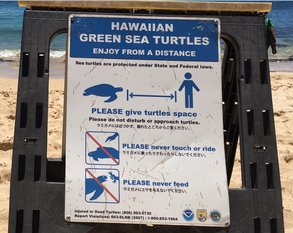











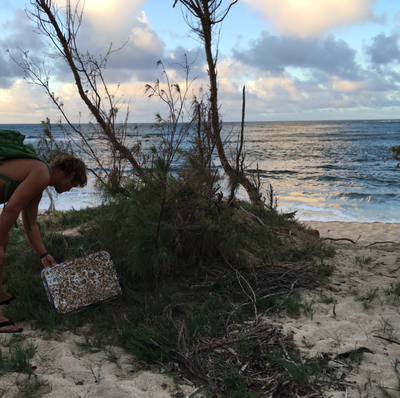



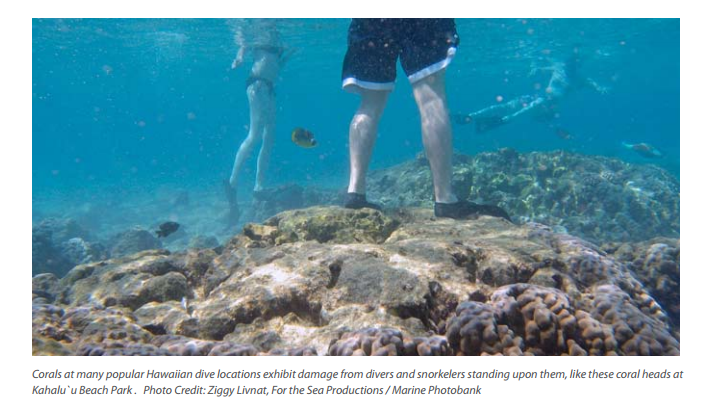

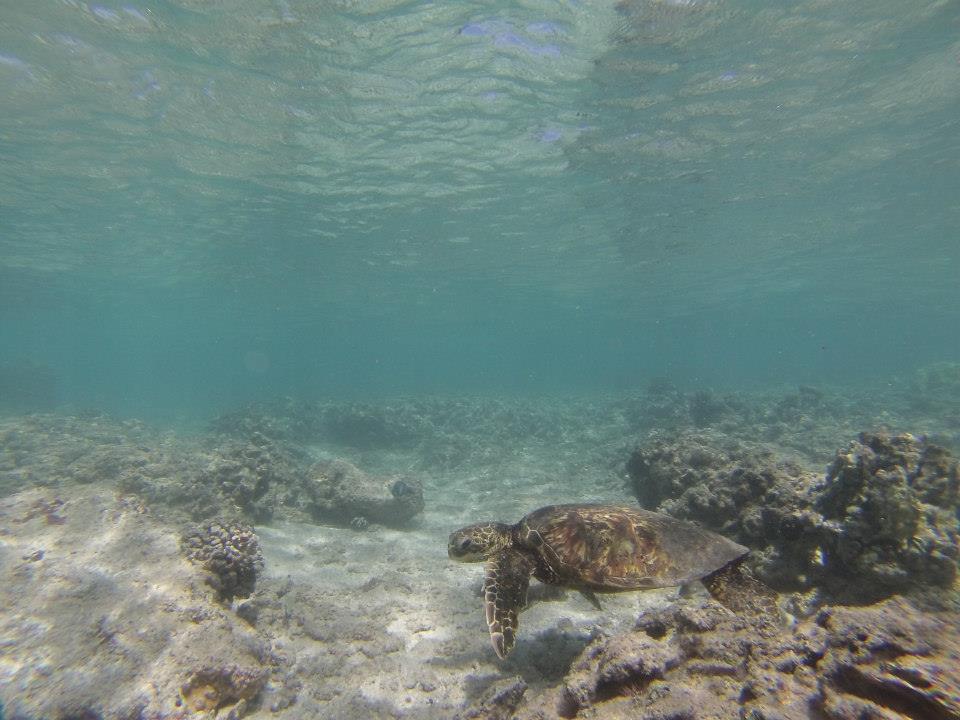
 RSS Feed
RSS Feed
